നേച്ചർ പോസിറ്റീവ് / കാർബൺ നെഗറ്റീവ്: ഡ്യൂക്ക് ഫാമുകളുമായുള്ള അഭിമുഖം
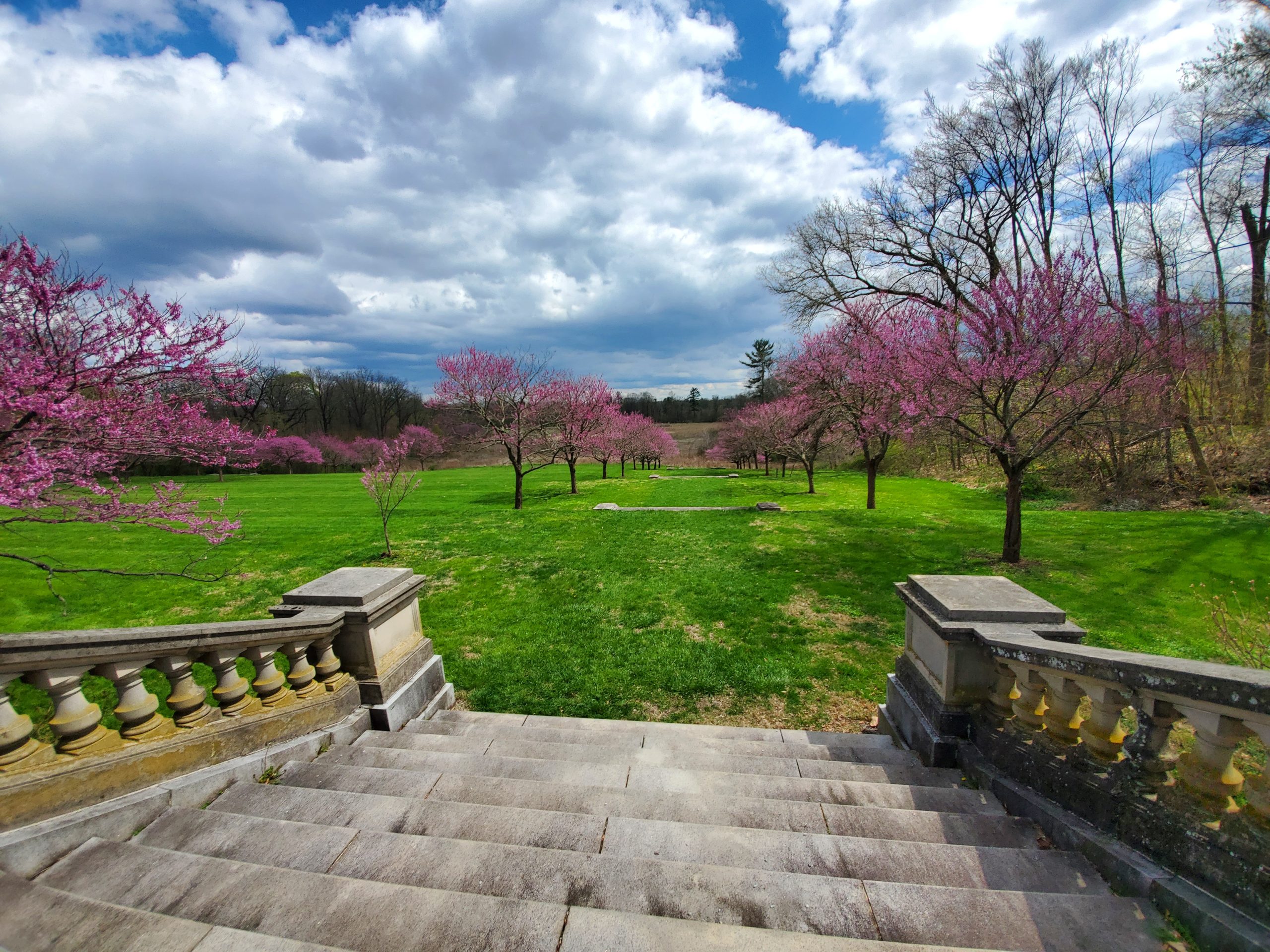
ന്യൂജേഴ്സിയിലെ ഡോറിസ് ഡ്യൂക്ക് ഫൗണ്ടേഷൻ്റെ കേന്ദ്രമായ ഡ്യൂക്ക് ഫാംസിൻ്റെ ഡെപ്യൂട്ടി എക്സിക്യൂട്ടീവ് ഡയറക്ടർ ജോൺ വാഗറുമായി ഇരുന്ന് കാലാവസ്ഥാ സുസ്ഥിരതയ്ക്കായുള്ള അവരുടെ ദ്വിമുഖ സമീപനത്തെക്കുറിച്ച് ആഴത്തിൽ പഠിക്കാൻ ക്ലൈമറ്റ് ടൂൾകിറ്റിന് അവസരം ലഭിച്ചു.
ക്ലൈമറ്റ് ടൂൾകിറ്റ്:
കാലാവസ്ഥാ മേഖലയിൽ ഡ്യൂക്ക് ഫാമുകൾ എന്തുചെയ്യുന്നുവെന്നതിൻ്റെ ഉയർന്ന തലത്തിലുള്ള കാഴ്ച ഞങ്ങൾക്ക് നൽകുക.
ജോൺ വാഗർ:
കാലാവസ്ഥാ സുസ്ഥിരതയുടെ കാഴ്ചപ്പാടിൽ നിന്ന് ഞങ്ങൾ ഇവിടെ ഡ്യൂക്ക് ഫാമിൽ എന്താണ് ചെയ്യുന്നതെന്ന് രൂപപ്പെടുത്തുന്ന ഒരു മാർഗം ഇതാണ് “പ്രകൃതി പോസിറ്റീവ്, കാർബൺ നെഗറ്റീവ്.”
ഞങ്ങളെപ്പോലെയുള്ള മറ്റ് പല പൂന്തോട്ടങ്ങൾക്കും സാംസ്കാരിക സ്ഥാപനങ്ങൾക്കും ഇത് ബാധകമാണെന്ന് ഞാൻ കരുതുന്നു - യഥാർത്ഥത്തിൽ സുസ്ഥിരതയെ ഒരു ബിൽറ്റ് പാരിസ്ഥിതിക വീക്ഷണകോണിൽ നിന്ന് മാത്രമല്ല, പ്രകൃതിയുടെയും പരസ്പര ബന്ധത്തിൻ്റെയും വീക്ഷണകോണിൽ നിന്ന് നോക്കുന്നു. റോബിൻ വാൾ കിമ്മറർ തൻ്റെ പുസ്തകത്തിൽ ഈ തത്ത്വചിന്തയെക്കുറിച്ച് പറയുന്നുണ്ട് ബ്രെയ്ഡിംഗ് സ്വീറ്റ്ഗ്രാസ്. ഡ്യൂക്ക് ഫാമിൽ ഞങ്ങൾക്ക് 2,700 ഏക്കർ ഉള്ളതിനാൽ, പ്രകൃതി പോസിറ്റീവും കാർബൺ നെഗറ്റീവും ആയ രീതിയിൽ നമ്മുടെ ഭൂമി കൈകാര്യം ചെയ്യേണ്ടതുണ്ട്. അതിനാൽ, അന്തരീക്ഷത്തിൽ നിന്ന് കാർബൺ ഡൈ ഓക്സൈഡ് നീക്കം ചെയ്യാൻ കഴിയുന്ന ലാൻഡ് മാനേജ്മെൻ്റും പാരിസ്ഥിതിക പുനരുദ്ധാരണ പ്രവർത്തനങ്ങളും നടത്തുമ്പോൾ നമ്മുടെ ഉദ്വമനം പൂജ്യത്തിലേക്ക് നയിക്കുക എന്നാണ് ഇതിനർത്ഥം. കാലാവസ്ഥ പ്രതിസന്ധിയിലായതിനാൽ അതിനെക്കുറിച്ച് ചിന്തിക്കേണ്ടത് പ്രധാനമാണ്. ഞങ്ങൾ ആവശ്യം അതിനെക്കുറിച്ച് ഇങ്ങനെ ചിന്തിക്കാൻ. ഇപ്പോഴുള്ളതുപോലെ നമുക്ക് വായുവിൽ വളരെയധികം കാർബൺ ഡൈ ഓക്സൈഡ് ഉണ്ട് എന്നതാണ് വസ്തുത, കാർബൺ നീക്കം ചെയ്യുകയും പ്രകൃതിയെ പരിപാലിക്കുകയും ചെയ്യുമ്പോൾ നാം ഉദ്വമനം പൂജ്യത്തിലേക്ക് നയിക്കേണ്ടതുണ്ട്.
ക്ലൈമറ്റ് ടൂൾകിറ്റ്:
എങ്ങനെയാണ് ഡ്യൂക്ക് ഫാംസ് കാലാവസ്ഥാ സുസ്ഥിരതയിലേക്കുള്ള യാത്ര ആരംഭിച്ചത്?
ജോൺ വാഗർ:
ഞങ്ങൾക്ക് എ ശുദ്ധമായ ഊർജ്ജ പദ്ധതി ഹരിതഗൃഹ വാതകങ്ങൾ കുറയ്ക്കുന്നതിനുള്ള ന്യൂജേഴ്സി സംസ്ഥാന ലക്ഷ്യങ്ങളുമായി 2016 മുതൽ ഞങ്ങൾ പിന്തുടരുന്നു പാരീസ് ഉടമ്പടി. എനർജി ഓഡിറ്റുകളിൽ നിന്ന് ഞങ്ങൾ ആരംഭിച്ചു, ഞങ്ങൾ അത് എങ്ങനെ നേടുമെന്ന് ഒപ്റ്റിമൈസ് ചെയ്യുന്നതിന് ഒരു വലിയ കാർബൺ കാൽപ്പാട് വിശകലനം നടത്തി. ആ വിശകലനത്തിൽ നിന്ന് പുറത്തുവന്ന പ്രധാന തന്ത്രങ്ങൾ ഇവയാണ്: 1) എല്ലാം വൈദ്യുതീകരിക്കുക, 2) നമ്മുടെ വൈദ്യുതി ഹരിതവൽക്കരിക്കുക, 3) നമ്മുടെ വൈദ്യുതി സംവിധാനത്തെ കൂടുതൽ പ്രതിരോധശേഷിയുള്ളതാക്കുക. നമ്മുടെ നിലവിലെ ഊർജ ആവശ്യത്തിൻ്റെ നൂറു ശതമാനവും നിറവേറ്റുന്ന ബാറ്ററി സ്റ്റോറേജുള്ള ഒരു പുതിയ സോളാർ അറേ നിർമ്മിക്കുക എന്നതാണ് അതിൽ ഉൾപ്പെട്ടിരിക്കുന്നത്.
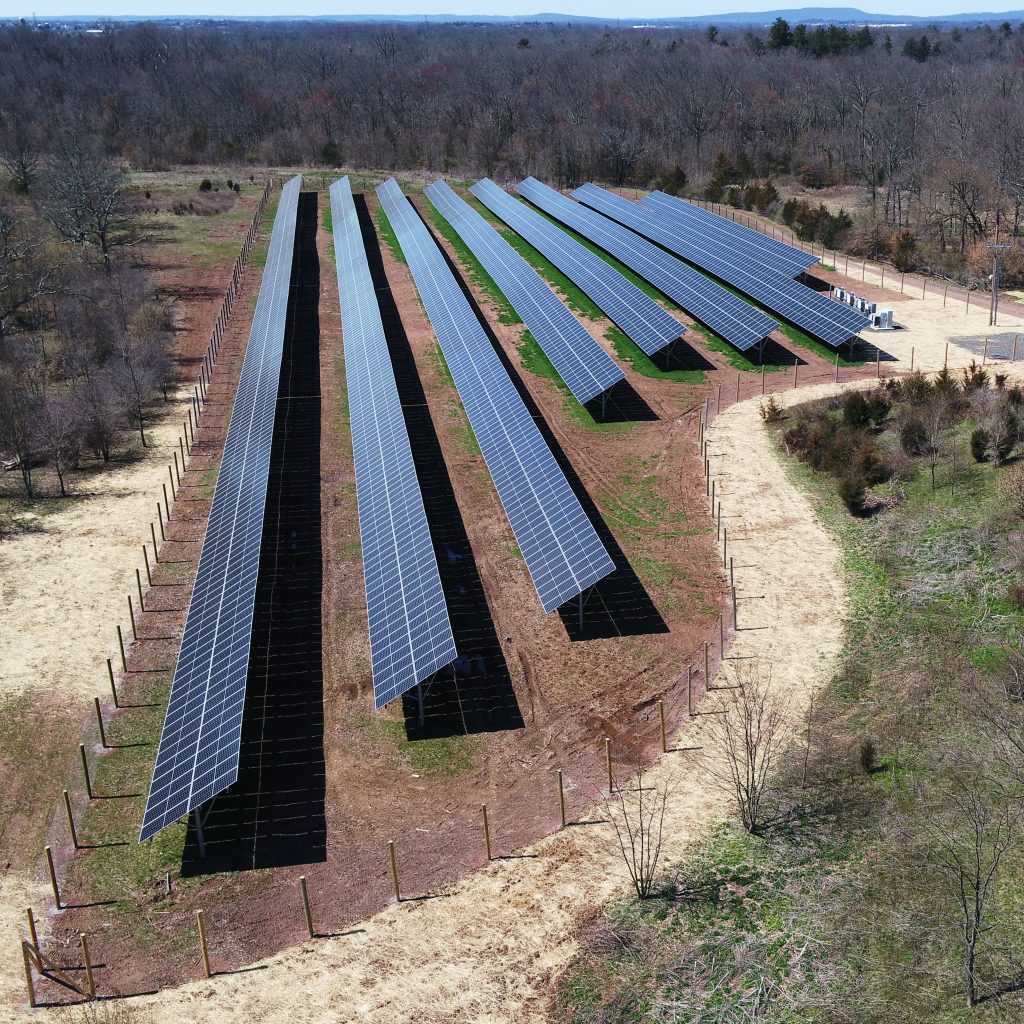
ജോൺ വാഗർ:
അതേ സമയം, ഞങ്ങൾ ഞങ്ങളുടെ വാഹനങ്ങളും ഉപകരണങ്ങളും വൈദ്യുതീകരിക്കുന്നു, പ്രധാനമായും വടക്കുകിഴക്ക്, നമ്മുടെ ബഹിരാകാശ ചൂടാക്കൽ. കാമ്പസിൽ ഞങ്ങൾക്ക് ധാരാളം പഴയ വീടുകളുണ്ട് - ഒരുപക്ഷേ ഏകദേശം 30 കെട്ടിടങ്ങൾക്ക് ചൂട് ആവശ്യമാണ്. അതിൽ ഭൂരിഭാഗവും പ്രകൃതി വാതകമാണ് അല്ലെങ്കിൽ അവയെ ചൂട് പമ്പുകളാക്കി മാറ്റുന്നു. സാമാന്യം നേരായ. ഏറ്റവും ബുദ്ധിമുട്ടുള്ള കെട്ടിടം ഞങ്ങളുടെ ഹരിതഗൃഹമാണ്, അത് ശരിക്കും തണുത്ത പഴയ ലോർഡ് & ബേൺഹാം സൗകര്യമാണ്. ഞങ്ങളുടെ ഓർക്കിഡ് റേഞ്ചും ഉഷ്ണമേഖലാ ശേഖരവും, ഏകദേശം 28,000 ചതുരശ്ര അടി വിസ്തീർണ്ണം, കൂടുതൽ പ്രശസ്തമായ നിരവധി കൺസർവേറ്ററികളുമായി താരതമ്യപ്പെടുത്തുമ്പോൾ ചെറുതായി തോന്നുന്നു, പക്ഷേ ഇത് ഞങ്ങളുടെ പ്രധാന കൺസർവേറ്ററിയാണ്, അത് ഊർജ്ജ തീവ്രവുമാണ്. ഞങ്ങൾ അവിടെ വെല്ലുവിളികൾ നേരിടുകയാണ്. അവർക്ക് ശരിക്കും വൈദ്യുത ചൂടാക്കൽ (ഹീറ്റ് പമ്പുകൾ) ഇല്ലെങ്കിലും ഈ ഘട്ടത്തിൽ നമുക്ക് ആവശ്യമായ താപനില നിലനിർത്താൻ കഴിയും. അതിനാൽ, ഞങ്ങൾ ഒരു ഇടക്കാല പരിഹാരത്തിനായി നോക്കുകയാണ്.
ക്ലൈമറ്റ് ടൂൾകിറ്റ്:
ചക്രവാളത്തിൽ നിങ്ങൾ വാഗ്ദാനമായ പരിഹാരങ്ങൾ കണ്ടെത്തുകയാണോ?
ജോൺ വാഗർ:
നമുക്ക് നിലവിൽ വിളിക്കപ്പെടുന്നവയുണ്ട് കണ്ടൻസിങ് ബോയിലറുകൾ മോഡുലേറ്റിംഗ് ഇവിടെ കാമ്പസിൽ. അവ 98 - 99% കാര്യക്ഷമമാണ് - അതിനാൽ നിങ്ങൾ പ്രകൃതി വാതകം കത്തിക്കാൻ പോകുകയാണെങ്കിൽ, നിങ്ങൾ ഇത് കത്തിക്കേണ്ട രീതിയാണിത്, ഞാൻ കരുതുന്നു. ഈ പ്രകൃതി വാതക ബോയിലറുകളുടെ കാർബൺ കാൽപ്പാടുകൾ ഗണ്യമായി കുറയ്ക്കുന്നതിന്, ഇലക്ട്രിക് വാട്ടർ ഹീറ്റിംഗ് ഉപയോഗിച്ച് ഞങ്ങൾ അത് അനുബന്ധമായി നൽകും. അതിനാൽ, ഞങ്ങളുടെ ഗ്രീൻ ഇലക്ട്രിക് ഗ്രിഡിലെ ലോഡ് വർദ്ധിപ്പിക്കുമ്പോൾ ബോയിലറുകളിലെ ലോഡ് കുറയ്ക്കാൻ കഴിയുന്ന എന്തെങ്കിലും ഞങ്ങൾ ഇപ്പോൾ രൂപകൽപ്പന ചെയ്യുന്നു. അതിനാൽ വീണ്ടും, ഈ ഇടക്കാല പരിഹാരം, ഞങ്ങൾ ഇപ്പോൾ അത് എഞ്ചിനീയറിംഗ് ചെയ്യുകയാണ്. ഞങ്ങൾക്ക് അത് ചെയ്യാൻ കഴിയുമെന്ന് ഞങ്ങൾ കരുതുന്നു, പക്ഷേ അത് പൊട്ടിക്കാൻ ബുദ്ധിമുട്ടാണ്. ഹരിതഗൃഹങ്ങളുള്ള ഒട്ടുമിക്ക ബൊട്ടാണിക്കൽ ഗാർഡനുകളിലും കാർബൺ കാൽപ്പാടുകളുടെ വീക്ഷണകോണിൽ നിന്ന് കണ്ടുപിടിക്കാൻ ഏറ്റവും ബുദ്ധിമുട്ടുള്ള കാര്യമാണിതെന്ന് ഞാൻ കരുതുന്നു. കുറച്ചു വർഷങ്ങൾക്കുള്ളിൽ, സങ്കീർണ്ണമായ ഒരു ഇൻഡോർ ഹോർട്ടികൾച്ചർ സിസ്റ്റത്തിന് ആവശ്യമായ താപനില നിലനിർത്താൻ കഴിയുന്ന ഹീറ്റ് പമ്പുകൾ അവർക്കുണ്ടാകുമെന്ന് പ്രതീക്ഷിക്കാം.
ക്ലൈമറ്റ് ടൂൾകിറ്റ്:
Phipps-ലും ഞങ്ങൾ ഇതേ അവസ്ഥയിലാണ്. ഞങ്ങളുടെ ലോവർ കാമ്പസ് അത്യാധുനിക സുസ്ഥിരമാണ്, എന്നാൽ ചരിത്രപരമായ ഒരു ലോർഡ് & ബേൺഹാം കൺസർവേറ്ററി ആയ ഞങ്ങളുടെ അപ്പർ കാമ്പസ് സുസ്ഥിരമല്ല, ഹീറ്റ് പമ്പുകളും ജിയോതെർമലും പോലെയുള്ള വ്യത്യസ്ത ഓപ്ഷനുകളിലേക്ക് ഞങ്ങൾ നോക്കുകയാണ്.
ജോൺ വാഗർ:
ഹരിതഗൃഹങ്ങളും കൺസർവേറ്ററികളും ഉള്ളതിനാൽ, പ്രകൃതി വാതക ബാക്കപ്പ് എപ്പോഴും ആവശ്യമായി വന്നേക്കാം. അല്ലെങ്കിൽ മാലിന്യം നിക്ഷേപിക്കുന്ന സ്ഥലങ്ങളിൽ നിന്നുള്ള മീഥെയ്ൻ പോലെയുള്ള ജൈവ ഇന്ധനം. എന്നാൽ നമുക്കുള്ള കളക്ഷനുകൾ കണക്കിലെടുക്കുമ്പോൾ; നമ്മൾ അതിശക്തരായിരിക്കണം. ഒന്നിലധികം ജനറേറ്ററുകളുള്ള ഒരു ആശുപത്രി പോലെയാണിത്. ഹോർട്ടികൾച്ചർ, പ്ലാൻ്റ് കൺസർവേഷൻ വീക്ഷണകോണിൽ നിന്ന് നമ്മൾ ഈ പ്രശ്നത്തെക്കുറിച്ച് ചിന്തിക്കേണ്ടതുണ്ട്. ഈ സംവിധാനങ്ങളെ നമുക്ക് ശരിക്കും പ്രതിരോധശേഷിയുള്ളതാക്കേണ്ടതുണ്ട്, ഒരുപക്ഷേ ഇന്ധനങ്ങൾക്ക് ഒരു പങ്കുണ്ടായിരിക്കാം, പക്ഷേ ഫോസിൽ ഇന്ധനങ്ങളല്ല.
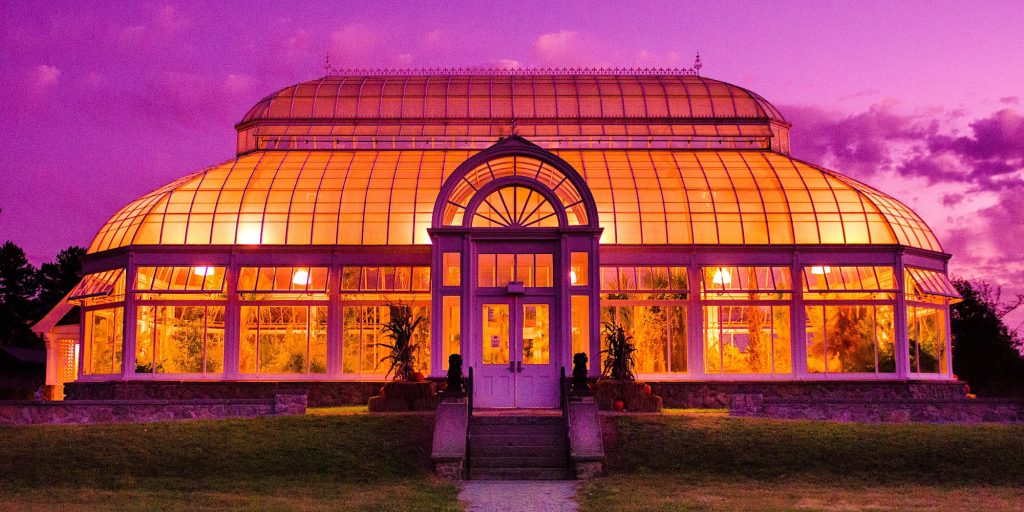
ക്ലൈമറ്റ് ടൂൾകിറ്റ്:
നിങ്ങളുടെ എനർജി ഓഡിറ്റ് ഇൻ-ഹൗസ് നടത്തിയോ അല്ലെങ്കിൽ വിശകലനം നടത്താൻ ഒരു കമ്പനിയെ വാടകയ്ക്കെടുത്തോ?
ജോൺ വാഗർ:
അത് യഥാർത്ഥത്തിൽ രണ്ടും ആയിരുന്നു. ഞങ്ങൾ ഒരു കമ്പനിയെ വാടകയ്ക്കെടുത്തു, കാരണം ഞങ്ങളുടെ പബ്ലിക് യൂട്ടിലിറ്റി കമ്മീഷൻ ഊർജ്ജ ഓഡിറ്റുകൾ നടത്താൻ കമ്പനികളെ വാടകയ്ക്കെടുക്കുന്നതിന് പ്രാദേശിക സർക്കാരുകൾക്കും ലാഭേച്ഛയില്ലാത്ത സ്ഥാപനങ്ങൾക്കും പണം നൽകുന്ന ഒരു പ്രോത്സാഹനമുണ്ട്. പല സംസ്ഥാനങ്ങളിലും ഇത് ഉണ്ട്. ഒരു എഞ്ചിനീയറിംഗ് സ്ഥാപനം ഓഡിറ്റ് നടത്തി, പക്ഷേ അത് വിവർത്തനം ചെയ്യുന്നതിനും ഒപ്റ്റിമൈസ് ചെയ്യുന്നതിനും ഞങ്ങൾക്ക് സഹായം ആവശ്യമാണ്. അതിനാൽ, ഞങ്ങൾ ഞങ്ങളുടെ എനർജി കൺസൾട്ടൻ്റുമായി ചേർന്ന് പ്രവർത്തിച്ചു, ഞങ്ങൾ കണ്ടെത്തിയ രസകരമായ കാര്യങ്ങളിൽ ഒന്ന്, വിൻഡോകൾ മാറ്റിസ്ഥാപിക്കുന്നതിനുപകരം ചൂടാക്കൽ വൈദ്യുതീകരിക്കുന്നതിൽ നിക്ഷേപിക്കുന്നതാണ് ഞങ്ങൾക്ക് നല്ലത് എന്നതാണ്. കാര്യക്ഷമതയും സംരക്ഷണവും നിങ്ങളുടെ പണം എല്ലായ്പ്പോഴും ഒഴിക്കേണ്ട സ്ഥലമാണെന്ന് നിങ്ങൾ കരുതും. എന്നാൽ ഈ സാഹചര്യത്തിൽ അല്ല. ഈ പഴയ വീടുകൾക്കായുള്ള പുതിയ വിൻഡോകൾക്കായി $15,000 ചെലവഴിക്കുന്നതിനുപകരം, പകരം ഞങ്ങൾ ഒരു പുതിയ $15,000 ഹീറ്റ് പമ്പ് സിസ്റ്റം സ്ഥാപിച്ചു. ചെലവ് വീക്ഷണകോണിൽ നിന്ന് നോക്കുമ്പോൾ, ഇതിന് ചെലവ് കുറവാണ്. കൂടാതെ, ഒരു കാർബൺ വീക്ഷണകോണിൽ നിന്നും: 1890 കളിലെ പഴയ വിൻഡോകൾ നമുക്കുണ്ട്, അത് മനോഹരമാണ്, പക്ഷേ അത് അരിപ്പ പോലെ ഒഴുകുന്നു. അവ മാറ്റിസ്ഥാപിക്കുന്നതിന്, ഉൽപ്പാദനം, വാതകം, ഗതാഗതം എന്നിവയിൽ നിന്നുള്ള ഉദ്വമനത്തിൻ്റെ വ്യാപ്തിയെക്കുറിച്ച് നാം ചിന്തിക്കേണ്ടതുണ്ട് - ഇപ്പോൾ കാര്യക്ഷമതയ്ക്കോ സംരക്ഷണത്തിനോ പകരം സുസ്ഥിര ഊർജ്ജത്തിലും വൈദ്യുതീകരണത്തിലും നിക്ഷേപിക്കുന്നത് കൂടുതൽ യുക്തിസഹമാണ്.
പിന്നീട് ഞങ്ങളുടെ എനർജി കൺസൾട്ടൻ്റ് വന്ന് ഞങ്ങളുടെ യൂട്ടിലിറ്റി ബില്ലുകൾ നോക്കുകയും ഊർജ ഉപയോഗം കൂടുതലായി നടക്കുന്ന ഒരു മാതൃക സൃഷ്ടിക്കുകയും ചെയ്തു, ഞങ്ങൾ ഇത് സ്കോപ്പ് 1, സ്കോപ്പ് 2 എമിഷനുകൾക്കുള്ള കാർബൺ കാൽപ്പാടിലേക്ക് വിവർത്തനം ചെയ്തു. ഇപ്പോൾ, ഞങ്ങൾ ആ മോഡൽ എടുത്ത് അതിൽ ഉൾപ്പെടുത്തുകയാണ് മൈക്രോസോഫ്റ്റ് പവർ ബിഐ. മാസാമാസം എന്താണ് സംഭവിക്കുന്നതെന്ന് നോക്കാനുള്ള സൗകര്യങ്ങൾക്കായി ഒരു തത്സമയ ഡാഷ്ബോർഡ് സൃഷ്ടിക്കാൻ Microsoft BI-ക്ക് കഴിയും. തുടർന്ന് ഞങ്ങളുടെ തത്സമയ കാർബൺ കാൽപ്പാട് എന്താണെന്ന് കാണിക്കുന്ന ഒരു വിദ്യാഭ്യാസ ഡാഷ്ബോർഡ് ഞങ്ങൾക്കുണ്ടാകും. തുടർന്ന് അളവുകൾ നോക്കുന്ന ഒരു എക്സിക്യൂട്ടീവ് ഡാഷ്ബോർഡ്. അതിനാൽ, ബിഐ ചെയ്യുന്നത് ഈ മോഡൽ എടുത്ത് ലൈവ് ആക്കുകയാണ്.
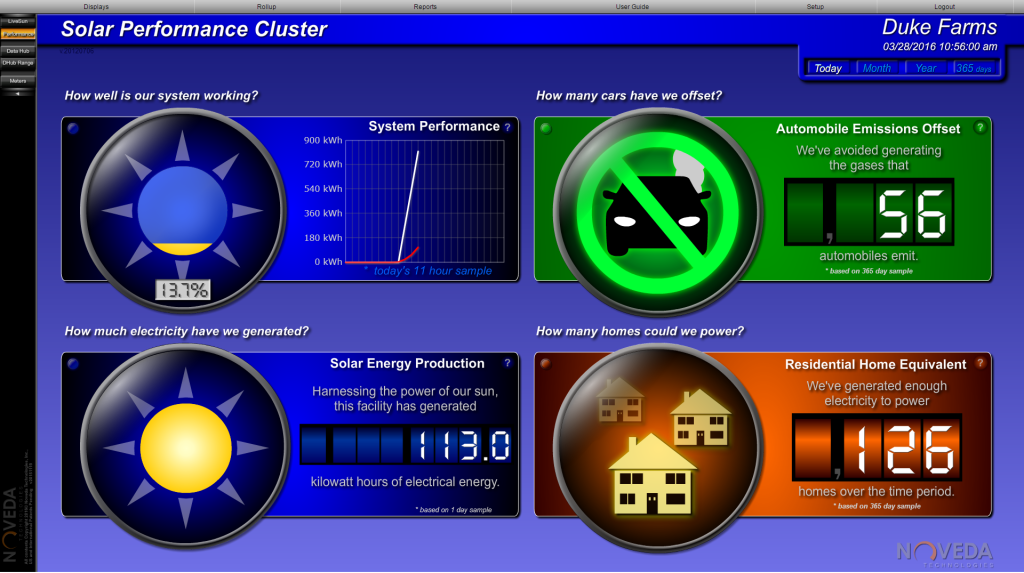
ജോൺ വാഗർ:
സിസ്റ്റം ഞങ്ങളുടെ യൂട്ടിലിറ്റി ബില്ലുകൾ, ഞങ്ങളുടെ ധനകാര്യ സംവിധാനം, ഞങ്ങൾ ഉപയോഗിക്കുന്ന ഊർജ്ജത്തെക്കുറിച്ചുള്ള വിവരങ്ങൾ ലഭിക്കുന്ന എല്ലാ മേഖലകളിൽ നിന്നും വിവരങ്ങൾ എടുക്കുന്നു, തുടർന്ന് ഒരു കേന്ദ്രീകൃത സ്ഥലത്ത് റിപ്പോർട്ടുകൾ പ്രദർശിപ്പിക്കാനും സൃഷ്ടിക്കാനും കഴിയും. നമ്മുടെ സുസ്ഥിര ഊർജ്ജ പ്രവർത്തനങ്ങളിലെ ഒരു യഥാർത്ഥ നവീകരണമാണിത്. നമുക്ക് നോക്കാനും ചോദിക്കാനും കഴിയുന്ന ഈ ഒരു ഗ്ലാസ്സ് പാളിയുണ്ടാകും: നമ്മുടെ ഓർക്കിഡ് ശ്രേണിയും കൺസർവേറ്ററിയും എത്രമാത്രം പ്രകൃതി വാതകം ഉപയോഗിച്ചു? നമ്മുടെ ഇലക്ട്രിക് വാഹനം ഈ മാസം എത്ര ഊർജം ഉപയോഗിച്ചു? എത്ര സോളാർ ഉത്പാദനം ഉണ്ടായിരുന്നു? ധാരാളം ഡാറ്റ സ്ട്രീമുകൾ വരുന്നതിനാൽ, കാമ്പസിലുടനീളം സ്മാർട്ട് മീറ്ററുകളിൽ നിന്നുള്ള എല്ലാ വിവരങ്ങളും BI എടുക്കുകയും അവയെല്ലാം ഒരു സ്ഥലത്ത് കൊണ്ടുവരുകയും ചെയ്യും. നമ്മൾ സംസാരിക്കുമ്പോൾ അത് ഇപ്പോൾ സംഭവിക്കുന്നു.
ക്ലൈമറ്റ് ടൂൾകിറ്റ്:
അത് ശരിക്കും അടുത്ത ലെവലാണെന്ന് തോന്നുന്നു.
ജോൺ വാഗർ:
ഞങ്ങൾ അതിൽ ആവേശഭരിതരാണ്. കാരണം ഓരോ സ്ഥാപനത്തിനും ഈ ഡാറ്റ സ്ട്രീമുകൾ ഉണ്ട്, അല്ലേ? ഞങ്ങളുടെ ധനകാര്യ വകുപ്പുമായോ പ്രാദേശിക യൂട്ടിലിറ്റിയുമായോ പ്രവർത്തിക്കുന്നതിലൂടെ, എന്താണ് സംഭവിക്കുന്നതെന്ന് വ്യക്തമായ ഈ ചിത്രം സൃഷ്ടിക്കാൻ ഞങ്ങൾക്ക് ഇത് ഒരുമിച്ച് ആരംഭിക്കാൻ കഴിയുമെന്ന് ഞങ്ങൾ കണ്ടെത്തുന്നു - വാർഷിക അടിസ്ഥാനത്തിൽ മാത്രമല്ല, തുടർച്ചയായി.
ക്ലൈമറ്റ് ടൂൾകിറ്റ്:
നിങ്ങൾ ഉൾപ്പെടുത്തുന്നുണ്ടോ വ്യാപ്തി 3 നിങ്ങളുടെ എമിഷൻ വിശകലനത്തിൽ, അല്ലെങ്കിൽ അതിൽ മാത്രം ശ്രദ്ധ കേന്ദ്രീകരിക്കുക സ്കോപ്പ് 1 ഉം 2 ഉം?
ജോൺ വാഗർ:
പ്രത്യേകിച്ച് സ്കോപ്പ് 3-നെ കുറിച്ച് ഞങ്ങൾ വളരെയധികം ചിന്തിച്ചിട്ടുണ്ട്, കാരണം അവ നമുക്ക് കൈകാര്യം ചെയ്യാൻ ബുദ്ധിമുട്ടുള്ള കാര്യങ്ങളാണ്. ഞങ്ങൾ കാർബൺ കാൽപ്പാടുകൾ വിശകലനം ചെയ്തപ്പോൾ, ഞങ്ങളുടെ സന്ദർശകരെ നോക്കാൻ ഞങ്ങൾ തീരുമാനിച്ചു, അവർ എവിടെ നിന്നാണ് വന്നത്, അവരുടെ ഉദ്വമനം. നമ്മുടെ ഭൂമിയുടെ അടിത്തട്ടിലെ പ്രകൃതിദത്ത കാലാവസ്ഥാ പരിഹാരങ്ങളിലൂടെ ആഗിരണം ചെയ്യപ്പെടുന്ന നമ്മുടെ ഉദ്വമനവും കാർബണും നോക്കിയാൽ നമ്മൾ കാർബൺ നെഗറ്റീവ് ആയിരിക്കും. എന്നാൽ പിന്നീട് ഞങ്ങളുടെ സന്ദർശകരിൽ നിന്നുള്ള ഉദ്വമനം കണക്കാക്കുമ്പോൾ - അത് നമ്മുടെ കാർബൺ ഉദ്വമനം വരെ വെള്ളത്തിൽ നിന്ന് ഊതിവിട്ടു. അതുകൊണ്ടാണ് ഞങ്ങൾ മുന്നോട്ട് പോയി, ഈ DC ഫാസ്റ്റ് ചാർജറുകൾ വികസിപ്പിക്കാൻ ഒരു ഗ്രാൻ്റ് നേടിയത് - അത് മാസാവസാനത്തോടെ പ്രവർത്തിക്കും - ഒരു കൂട്ടം പുതിയ ലെവൽ രണ്ട് ചാർജറുകൾ.

ജോൺ വാഗർ:
സ്കോപ്പ് 3 ഞങ്ങൾക്ക് ഏറ്റവും വെല്ലുവിളി നിറഞ്ഞതാണ്. ഞങ്ങൾ അത് വ്യക്തമായി അഭിസംബോധന ചെയ്യേണ്ടതുണ്ടെന്ന് ഞാൻ ശരിക്കും വിശ്വസിക്കുന്നു, അല്ലാത്തപക്ഷം സ്കോപ്പ് 3 കണക്കാക്കാതെ തന്നെ നമ്മൾ കാർബൺ ന്യൂട്രൽ അല്ലെങ്കിൽ നെറ്റ്-സീറോ ആണെന്ന് പറഞ്ഞ് സ്വയം കബളിപ്പിക്കാൻ കഴിയും. നിങ്ങൾ സ്കോപ്പ് 3 അഭിസംബോധന ചെയ്യാൻ തുടങ്ങുമ്പോൾ, അത് നിങ്ങളുടെ കാഴ്ചപ്പാടിനെ വിശാലമാക്കുന്നു. നിങ്ങൾ സ്വീകരിക്കേണ്ട നടപടികളും - ഒരു DC ഫാസ്റ്റ് ചാർജർ നിർമ്മിക്കുകയോ അല്ലെങ്കിൽ ഞങ്ങളുടെ പരിസ്ഥിതി വിദ്യാഭ്യാസ പരിപാടികൾ നോക്കുകയോ കാർബൺ നെഗറ്റീവ് പ്രവർത്തനങ്ങൾ പ്രോത്സാഹിപ്പിക്കുകയോ ചെയ്യുക. അതിനാൽ, വീണ്ടും, ഇത്തരത്തിലുള്ള കാർബൺ കാൽപ്പാടുകൾ വിശകലനം ചെയ്യുന്നതിലൂടെ, സ്കോപ്പ് 3-നെ അഭിസംബോധന ചെയ്യുമ്പോൾ നാമെല്ലാവരും നമ്മുടെ കാർബൺ, എനർജി സിസ്റ്റങ്ങൾ നോക്കേണ്ടതുണ്ടെന്ന് ഞാൻ കരുതുന്നു, ഇത് ഒരു പ്രശ്നമാണെന്ന് വ്യക്തമാണ്. സ്കോപ്പ് 1, സ്കോപ്പ് 2 - നിങ്ങൾ പുറത്തുവിടുന്ന കാര്യങ്ങളിൽ ഒരു ഇംപാക്ട് നമ്പർ ഇടുന്നത് വളരെ എളുപ്പമാണ്, കാലക്രമേണ അത് കുറയ്ക്കാൻ നോക്കുന്നു. സ്കോപ്പ് 1 ഉപയോഗിച്ച്, ഫോസിൽ ഇന്ധനത്തിൻ്റെ അടിസ്ഥാനത്തിൽ നിങ്ങൾ സൈറ്റിൽ കത്തിക്കുന്നത് ഇതാണ്. തുടർന്ന് സ്കോപ്പ് 2 ഉപയോഗിച്ച്, അത് നിങ്ങളുടെ ഊർജ്ജ ഗ്രിഡിലേക്കും നിങ്ങൾ ഗ്രിഡിൽ നിന്ന് വലിച്ചെടുക്കുന്ന വൈദ്യുതിയിലേക്കും നോക്കുന്നു. ആ സാധനം വളരെ അളവറ്റതാണ്. എന്നാൽ സ്കോപ്പ് 3 കൂടുതൽ ഗുണപരമാണ്, കാരണം പിശകുകൾ ഉണ്ട്; നിങ്ങൾ എന്തെങ്കിലും രണ്ടുതവണ എണ്ണുകയാണെങ്കിൽ നിങ്ങൾക്കറിയില്ല. മുഴുവൻ ജീവിത ചക്രം വിശകലനം വളരെ സങ്കീർണ്ണമാണ്.
ക്ലൈമറ്റ് ടൂൾകിറ്റ്:
നിങ്ങളുടെ സ്കോപ്പ് 3 വിശകലനം എങ്ങനെ കൈകാര്യം ചെയ്യാൻ തുടങ്ങി?
ജോൺ വാഗർ:
ഞങ്ങൾ സഹകരിക്കുന്ന റട്ജേഴ്സ് യൂണിവേഴ്സിറ്റിയിൽ ഒരു ഗവേഷകനുണ്ട് - അവൾ ഒരു ലൈഫ് സൈക്കിൾ കാർബൺ ഫൂട്ട്പ്രിൻ്റ് വിശകലനം പൂർത്തിയാക്കാൻ പ്രവർത്തിക്കുന്നു, അവളുടെ പ്രത്യേകതയാണ് സ്കോപ്പ് 3. വർഷാവസാനത്തോടെ ഞങ്ങൾക്ക് അത് ലഭിക്കും. എന്നിട്ട് ഞങ്ങൾ അതിനെ എങ്ങനെ അഭിസംബോധന ചെയ്യുന്നു, എങ്ങനെ ആശയവിനിമയം നടത്തുന്നു എന്ന് കണ്ടെത്തേണ്ടതുണ്ട്. ആമസോണിൽ നിന്ന് പാക്കേജുകൾ പ്രവർത്തനക്ഷമമായി ലഭിക്കുന്നത് നിർത്തിയില്ലെങ്കിൽ, ഞങ്ങൾക്ക് ചെയ്യാനോ പരിഹരിക്കാനോ കഴിയാത്ത ചില കാര്യങ്ങളുണ്ട്. എന്നാൽ പിന്നീട് നമുക്ക് ചെയ്യാൻ കഴിയുന്ന കാര്യങ്ങളുണ്ട്. എന്തായാലും, ഇത് ചെയ്യുന്നതിലും ഉദ്വമനത്തെക്കുറിച്ച് കൂടുതൽ വിശാലമായി ചിന്തിക്കുന്നതിലും നമ്മുടെ ചിന്തകൾ വളരെയധികം വികസിച്ചു. നിർഭാഗ്യവശാൽ അതിൻ്റെ അർത്ഥം ഡ്യൂക്ക് ഫാമുകൾ എപ്പോൾ വേണമെങ്കിലും കാർബൺ നെഗറ്റീവ് ആയി കാണിക്കില്ല. മൊത്തം കാർബൺ ഉദ്വമനത്തെ സംബന്ധിച്ചിടത്തോളം, നമുക്ക് ആത്യന്തികമായി നെഗറ്റീവായേക്കാം. എന്നാൽ ഈ സൈറ്റുമായി ബന്ധപ്പെട്ട മൊത്തം കാർബൺ ഉദ്വമനവും ഞങ്ങളുടെ എല്ലാ സൈറ്റുകളുമായും ബന്ധപ്പെട്ട ഗ്രോസ് ഗ്രീൻഹൗസ് വാതക ഉദ്വമനവും പരിഗണിക്കേണ്ടതുണ്ട്.
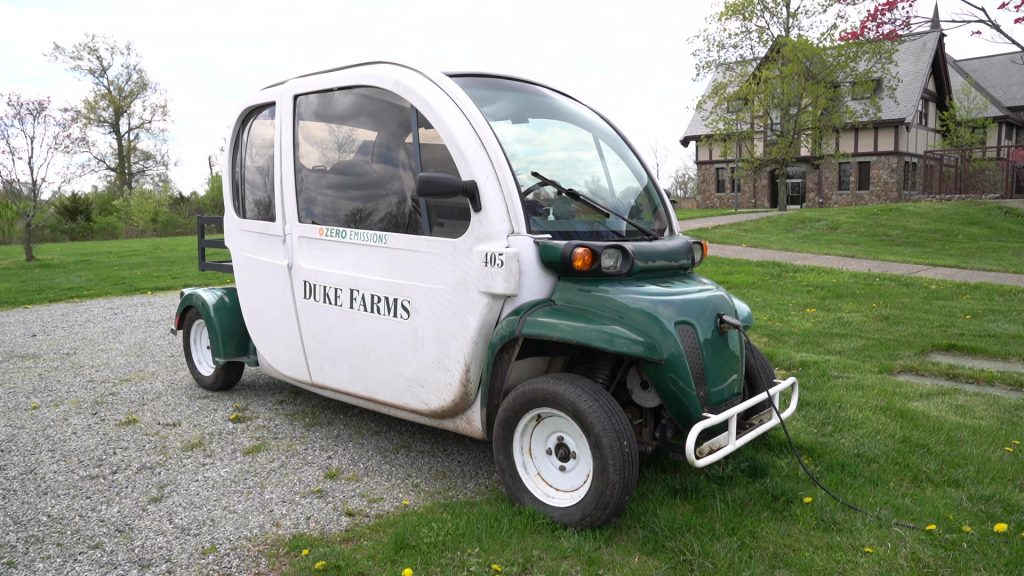
ക്ലൈമറ്റ് ടൂൾകിറ്റ്:
നിങ്ങളുടെ തന്ത്രങ്ങൾക്ക് സ്ഥാപനപരമായ പൂർണ പിന്തുണയുണ്ടോ?
ജോൺ വാഗർ:
ഞങ്ങൾ കാറ്റലിസ്റ്റ് ഇനിഷ്യേറ്റീവ് എന്ന് വിളിക്കുന്നത് ഞങ്ങൾക്കുണ്ട്. ഡോറിസ് ഡ്യൂക്ക് ഫൗണ്ടേഷനിൽ ഞങ്ങൾ മൂന്ന് പേർ ഇതിനെക്കുറിച്ച് ധാരാളം സംസാരിക്കുകയും അത് ഓർഗനൈസേഷനിൽ ഉയർത്തുകയും ചെയ്യുന്നു. ഇത് ഞങ്ങളുടെ എക്സിക്യൂട്ടീവ് ഡയറക്ടർ മാർഗരറ്റ് വാൾഡോക്കും ഞങ്ങളുടെ സൗകര്യങ്ങളും സാങ്കേതിക മാനേജർ ജിം ഹാൻസണുമാണ്; ഞങ്ങൾ അതിനെ കുറിച്ച് ഏറ്റവും കൂടുതൽ ചിന്തിക്കുന്നവരാണ്. എന്നിരുന്നാലും, ചില ബൊട്ടാണിക്കൽ ഗാർഡനുകളിൽ നിന്നും മറ്റ് സ്ഥാപനങ്ങളിൽ നിന്നും വ്യത്യസ്തമായി, ഞങ്ങളുടെ ദൗത്യം സുസ്ഥിരതയാണ്. അതിനാൽ, ധാരാളം പുഷ്ബാക്ക് ഇല്ല. ശുദ്ധമായ ഊർജം വേഗത്തിൽ നടപ്പിലാക്കുന്നതിനും ത്വരിതപ്പെടുത്തുന്നതിനുമുള്ള തടസ്സങ്ങൾ കണ്ടെത്തുന്നതിന് സമാന വലുപ്പത്തിലുള്ള സ്ഥാപനങ്ങളുമായി ഞങ്ങൾ പങ്കാളിത്തം രൂപീകരിക്കുന്നു. സൗരോർജ്ജം കൂടുതൽ വേഗത്തിൽ സംഭവിക്കുന്നുവെന്ന് ഉറപ്പാക്കാൻ അനുവദിച്ചുകൊണ്ട് നമുക്ക് വ്യത്യസ്തമായി എന്തുചെയ്യാൻ കഴിയും? അല്ലെങ്കിൽ ബാറ്ററി സംഭരണവും പ്രതിരോധശേഷിയും. പങ്കാളികൾക്കും വിദ്യാഭ്യാസ സ്ഥാപനങ്ങൾക്കും നമ്മുടെ വ്യാപ്തി വർദ്ധിപ്പിക്കാനും ഊർജ്ജ പരിവർത്തനം സംഭവിക്കുന്ന വേഗതയെ സ്വാധീനിക്കാൻ സഹായിക്കാനും കഴിയും.
ക്ലൈമറ്റ് ടൂൾകിറ്റ്:
ഡ്യൂക്ക് ഫാംസിലെ ലക്ഷ്യം മറ്റ് വലിയ സ്ഥാപനങ്ങൾക്കുള്ള ഒരു പ്രകടന കാമ്പസായി മാറുക - വലിയ അളവിലുള്ള ഏക്കറുകളുള്ള ആളുകൾക്ക് - കാലാവസ്ഥ സുസ്ഥിരതയിൽ മികച്ച രീതികൾ എങ്ങനെ സ്വീകരിക്കാം എന്നതിനുള്ള ഒരു വഴികാട്ടിയാകുകയാണോ?
ജോൺ വാഗർ:
ശുദ്ധമായ ഊർജ്ജത്തിൻ്റെ ത്വരിതപ്പെടുത്തലിനെ സ്വാധീനിക്കുന്നതിനുള്ള ഒരു പ്ലാറ്റ്ഫോം നമുക്കുണ്ട്. തീർച്ചയായും, ഞങ്ങൾ ഇവിടെ എല്ലാം ചെയ്യുന്നില്ല. നമുക്ക് കടലിൽ കാറ്റ് ഇല്ല, ഉദാഹരണത്തിന്. എന്നാൽ ഞങ്ങൾ ഗ്രൗണ്ടിൽ ചെയ്യുന്നത് സംഭാഷണത്തെ സ്വാധീനിക്കാൻ സഹായിക്കുന്നതിന് മേശപ്പുറത്ത് ഒരു യഥാർത്ഥ ഇരിപ്പിടം നൽകുന്നുവെന്ന് ഞാൻ കരുതുന്നു. ഇത് മുന്നോട്ട് കൊണ്ടുപോകുന്നതിലും ഞങ്ങളുടെ സൗകര്യത്തെ ഒരു പ്ലാറ്റ്ഫോമായി ഉപയോഗിക്കുന്നതിലും ഞങ്ങൾ നേതാക്കളായി ഞാൻ കാണുന്നു - ഞങ്ങൾക്ക് ഇവിടെ സാങ്കേതികവിദ്യ ഉള്ളതുകൊണ്ടും ഞങ്ങൾ അത് വൃത്തിയായി സംയോജിപ്പിക്കുന്നതുകൊണ്ടും മാത്രമല്ല, ഒത്തുചേരാനും കൊണ്ടുവരാനും ഞങ്ങൾക്ക് മികച്ച ഇടമുണ്ട്. ഈ വിഷയങ്ങളെക്കുറിച്ച് സംസാരിക്കാൻ ആളുകൾ ഒരുമിച്ച്. ഞങ്ങളുടെ കൂട്ടായ അനുഭവം ഒരു അടിത്തറയായി ഉപയോഗിക്കുന്നത്, ദേശീയ തലത്തിൽ ആത്യന്തികമായി ആളുകളെ ഒരുമിച്ച് കൊണ്ടുവരാൻ കഴിയും. പ്രാദേശികമായി ന്യൂജേഴ്സിയിലെങ്കിലും ഒരു നേതൃസ്ഥാനം നേടാൻ ശ്രമിക്കുന്നതായി ഞങ്ങൾ ശരിക്കും കാണുന്നു. കാരണം ഈ പ്രശ്നങ്ങളിൽ പലതും വളരെ പ്രാദേശികമാണ്, അല്ലേ?
ക്ലൈമറ്റ് ടൂൾകിറ്റ്:
ഡ്യൂക്ക് ഫാമിൽ നിങ്ങൾ ചെയ്യുന്ന ലാൻഡ് റീജനറേഷൻ ടെക്നിക്കുകളെ കുറിച്ച് എന്നോട് പറയാമോ?
ജോൺ വാഗർ:
അതിനാൽ, ഞങ്ങൾക്ക് 2,700 ഏക്കറിലധികം ഉണ്ട്, ഞങ്ങൾ ധാരാളം പുനരുദ്ധാരണം നടത്തി. അതിൽ ഭൂരിഭാഗവും അനുചിതമായ പ്രദേശങ്ങളിലെ കൃഷിഭൂമിയായിരുന്നു - അതിനാൽ രണ്ട് വർഷത്തിലൊരിക്കൽ വെള്ളപ്പൊക്കത്തിന് വിധേയമാകുന്ന വെള്ളപ്പൊക്ക സമതലങ്ങൾ. ഞങ്ങൾ എന്താണ് ചെയ്തത്, ഞങ്ങൾ ഫെഡറൽ ഗവൺമെൻ്റുമായി ചേർന്ന് പ്രവർത്തിക്കുന്നു എൻആർസിഎസ്വെള്ളപ്പൊക്ക സമതലത്തിൽ - റാരിറ്റൻ നദിയിൽ - ഏകദേശം 500 ഏക്കറിൽ അയവ് വരുത്തി, തുടർന്ന് ചില നൂതന ഫണ്ടിംഗ് സ്രോതസ്സുകൾ ഉപയോഗിച്ച് പ്രാദേശിക നദിക്കരയിലെ ആവാസ വ്യവസ്ഥയിലേക്ക് അത് പുനഃസ്ഥാപിച്ചു. പ്രകൃതി വിഭവ നാശം പരിഹരിക്കൽ. 1700-കളുടെ തുടക്കത്തിൽ ഡച്ച് കർഷകർ ഇവിടെ വരുന്നതിന് മുമ്പ് - ചോളവും സോയയും പഴയതാക്കി മാറ്റാൻ ഞങ്ങൾ പുറത്തുനിന്നുള്ള പണം കൊണ്ടുവന്നു. അത് വളരെ പ്രധാനമാണ്, കാരണം റാരിറ്റൻ നദി പൊതു ജലവിതരണമാണ്. ധാരാളം വെള്ളപ്പൊക്കത്തിന് സാധ്യതയുണ്ട്. അതിനാൽ ആ പുനരുദ്ധാരണം നദിയുടെ വേഗത കുറയ്ക്കാൻ സഹായിക്കും.
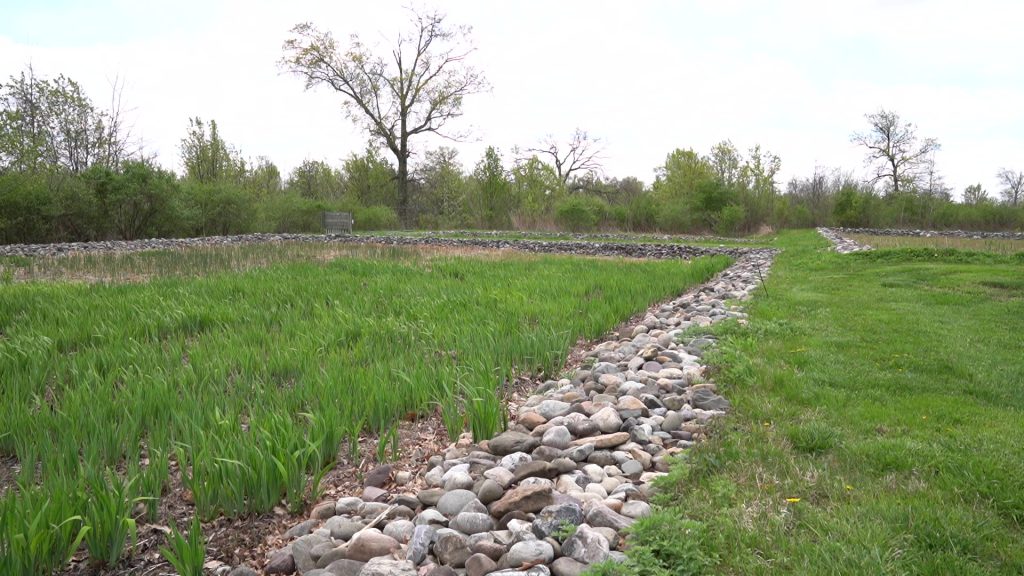
ജോൺ വാഗർ:
ഞങ്ങൾ കൈകാര്യം ചെയ്യുന്ന കാർഷിക വയലുകളും ഞങ്ങൾക്കുണ്ട് - പുൽമേടിലെ പക്ഷികൾക്കും പുൽമേടുകളുടെ പുനരുദ്ധാരണ പ്രവർത്തനങ്ങൾക്കുമായി ഞങ്ങൾ കൈകാര്യം ചെയ്യുന്ന ഒരു കാർഷിക ഇക്കോളജി ഫാമിംഗ് പ്രോഗ്രാമിൽ ഞങ്ങൾക്ക് ഒരു കന്നുകാലിക്കൂട്ടമുണ്ട്. ആക്രമണകാരികളായ ജീവിവർഗങ്ങളുടെ നിയന്ത്രണം ഞങ്ങൾ നടത്തുന്ന ഉയർന്ന പ്രദേശങ്ങളിലെ വനങ്ങളുണ്ട്. ആക്രമണകാരികളെ നിയന്ത്രിക്കുന്നതിലും തദ്ദേശീയരെ പ്രോത്സാഹിപ്പിക്കുന്നതിലും പ്രകൃതിദത്ത ആവാസവ്യവസ്ഥ പ്രക്രിയകളിലും ശ്രദ്ധ കേന്ദ്രീകരിക്കുന്ന ഒരു സജീവ മാൻ മാനേജ്മെൻ്റ് പ്രോഗ്രാം ഞങ്ങൾക്കുണ്ട്. അതിനാൽ, വർഷങ്ങളായി തുടരുന്ന ഈ പുനരുദ്ധാരണ പദ്ധതികളെല്ലാം ഞങ്ങളുടെ പക്കലുണ്ട്. മൂന്ന് വർഷം മുമ്പ്, ഞങ്ങൾ റട്ജേഴ്സ് യൂണിവേഴ്സിറ്റിയുമായി ഒരു ഗവേഷണ പ്രോജക്റ്റ് ആരംഭിച്ചു, ഞങ്ങൾ ചെയ്യുന്ന എല്ലാ പുനരുദ്ധാരണ പദ്ധതികൾക്കും കാർബൺ ബേസ്ലൈൻ എന്താണെന്ന് കണ്ടെത്താൻ ഞങ്ങളെ സഹായിക്കുന്നതിന് ഞങ്ങൾ അവർക്ക് പണം നൽകി. അവർ ചെയ്തത് എല്ലാ മണ്ണിലെയും കാർബൺ, മരങ്ങളിലെ കാർബൺ എന്നിവ അളന്നു, അവർ കാർബൺ ഫ്ലക്സുകൾ നോക്കുന്നു എഡ്ഡി-കൊവാരിയൻസ് ഫ്ലക്സ് ടവറുകൾ.
ക്ലൈമറ്റ് ടൂൾകിറ്റ്:
അതിനെക്കുറിച്ച് ഞങ്ങളോട് കൂടുതൽ പറയുക.
ജോൺ വാഗർ:
പരിസ്ഥിതി വ്യവസ്ഥകളിൽ വർഷം മുഴുവനും കാർബൺ ഫ്ലക്സുകൾ നിങ്ങളെ കാണിക്കുന്ന ടവറുകളാണ് ഇവ. മരങ്ങളുടെ വളർച്ച അളക്കുന്ന നിരവധി സ്രവ ഫ്ലോ മീറ്ററുകൾ ഞങ്ങളുടെ പക്കലുണ്ട്. അതിനാൽ, ഈ ഭൂമി എത്രമാത്രം കാർബൺ വേർപെടുത്തുന്നു എന്നതിൻ്റെ കൃത്യമായ ശാസ്ത്രീയ അളവെടുപ്പ് ഞങ്ങൾ നടത്തുന്നുണ്ട്. തുടർന്ന് മാനേജ്മെൻ്റ് രീതികളും അത് എങ്ങനെ ബാധിക്കുന്നുവെന്നും നോക്കുന്നു. ഉദാഹരണത്തിന്, മണ്ണിൽ ബയോചാർ ചേർക്കുന്നത് എങ്ങനെ മണ്ണിലെ കാർബണും സീക്വസ്ട്രേഷനും വർദ്ധിപ്പിക്കുന്നു, അല്ലെങ്കിൽ വനനശീകരണം അല്ലെങ്കിൽ നാടൻ ചെടികളും കുറ്റിച്ചെടികളും നട്ടുപിടിപ്പിക്കുന്നതുപോലുള്ള ലാൻഡ് മാനേജ്മെൻ്റ് രീതികളിലെ മാറ്റങ്ങൾ കാർബൺ ഉപഭോഗത്തെ എങ്ങനെ മാറ്റുമെന്ന് ഞങ്ങൾ നോക്കുകയാണ്. ഇത് ബേസ്ലൈനിനേക്കാൾ കൂടുതലാണ് - ഈ മണ്ണിലെ കാർബൺ ഉള്ളടക്കം എങ്ങനെ വർദ്ധിപ്പിക്കാൻ കഴിയുമെന്ന് കാണാൻ ഞങ്ങൾ യഥാർത്ഥ ലാൻഡ് മാനേജ്മെൻ്റ് ടെക്നിക്കുകൾ നടത്തുന്ന പരീക്ഷണങ്ങൾ നടത്തുകയാണ്.
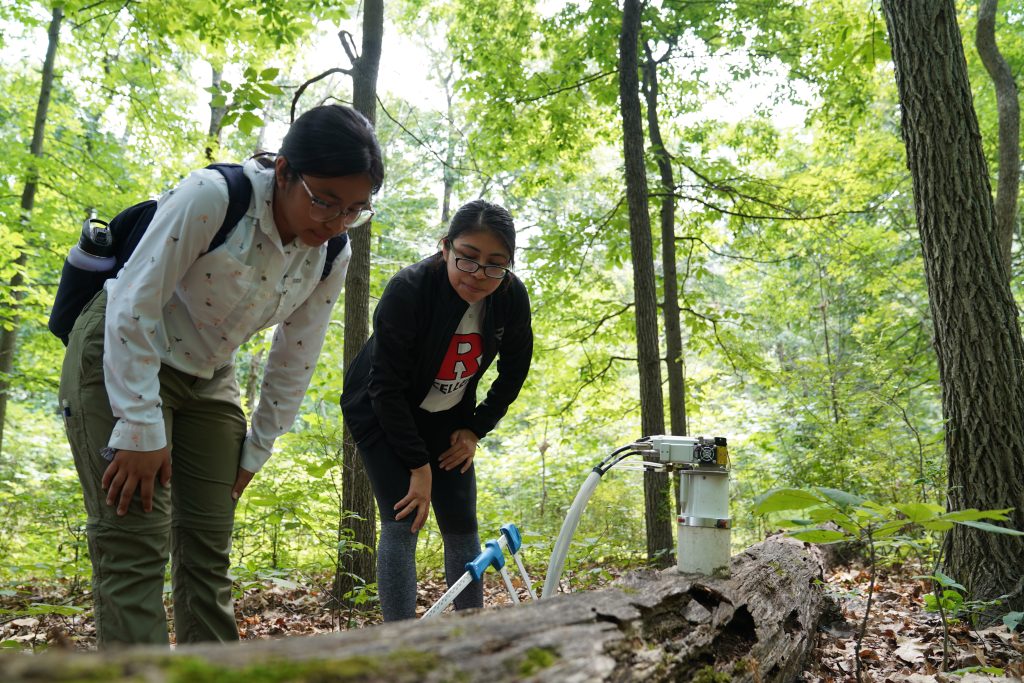
ജോൺ വാഗർ:
എന്നിരുന്നാലും, നിങ്ങൾ എല്ലായിടത്തും ഓടുന്നത് ഈ ആശയമാണ്, 'നേച്ചർ പോസിറ്റീവ്' എന്നത് കാർബണിന് മാത്രമല്ല. സംസ്ഥാനത്ത് വംശനാശഭീഷണി നേരിടുന്ന ഏറ്റവും മികച്ച പുൽമേടുകളുടെ ആവാസ വ്യവസ്ഥകൾ ഇവിടെയുണ്ട്, നമ്മുടെ കാർഷിക മേഖലകളിൽ - ഭൂരിഭാഗവും നാടൻ ഊഷ്മള സീസണിലെ പുല്ലുകൾ. അത് നിലനിർത്താൻ പശുക്കൾക്ക് കഴിയും എന്നതാണ് ഞങ്ങളുടെ ആശയം. വാസ്തവത്തിൽ, ഞങ്ങൾ മൃഗങ്ങളെ കരയിലേക്ക് തിരികെ കൊണ്ടുവരുമ്പോൾ, മണ്ണിലെ കാർബൺ നിരക്ക് വർദ്ധിക്കുന്നതായി ഞങ്ങൾ കണ്ടെത്തുന്നു. പശുക്കൾ ധാരാളം മീഥേൻ പുറത്തുവിടുന്നുണ്ടെങ്കിലും, അത് യഥാർത്ഥത്തിൽ മണ്ണിൻ്റെ ആരോഗ്യത്തിലും ഗുണനിലവാരത്തിലും നല്ല സ്വാധീനം ചെലുത്തുന്നു. കണക്കുകൾ കാണുന്നത് രസകരമായിരിക്കും. പോഷക ചക്രങ്ങളെ സംബന്ധിച്ചിടത്തോളം, ഈ ഭൂമികൾ മുൻകാലങ്ങളെ അപേക്ഷിച്ച് വളരെ മികച്ച രീതിയിൽ കൈകാര്യം ചെയ്യപ്പെടുന്നതിനാൽ ധാരാളം മീഥേൻ ഓഫ്സെറ്റ് ചെയ്യപ്പെടുമെന്ന് ഞങ്ങൾ കരുതുന്നു.
ഇപ്പോൾ, കാർബൺ വേർതിരിക്കൽ പരമാവധിയാക്കണമെങ്കിൽ, ഞങ്ങൾ അതെല്ലാം മരങ്ങളിൽ നട്ടുപിടിപ്പിക്കും. ശരിയാണോ? എന്നാൽ മരങ്ങൾ വളരുന്നത് പുൽമേടുകളുടെ ആവാസവ്യവസ്ഥയെ നശിപ്പിക്കും. ഇത് പ്രകൃതി പോസിറ്റീവ് എന്ന ആശയത്തിലേക്ക് നമ്മെ തിരികെ കൊണ്ടുവരുന്നു. ഭൂമിയോ വസ്തുവകകളോ കൈകാര്യം ചെയ്യുന്നതിൽ നാമെല്ലാവരും ചെയ്യേണ്ട ട്രേഡ് ഓഫുകളാണിത്. ഡ്യൂക്ക് ഫാമിൽ, ഞങ്ങൾ കാർബൺ ആഗിരണം വർദ്ധിപ്പിക്കാൻ പോകുന്നില്ല, കാരണം ഞങ്ങൾക്ക് പുൽമേടുകൾ ഉണ്ട്, ഞങ്ങൾക്ക് പശുകളുണ്ട്, പക്ഷികളുണ്ട്; വംശനാശഭീഷണി നേരിടുന്ന പക്ഷികൾ യഥാർത്ഥത്തിൽ നമ്മുടെ സംരക്ഷണ ലക്ഷ്യമാണ്. അതിനാൽ, മണ്ണിൽ കാർബൺ ചേർക്കുന്നതിൻ്റെ അധിക നേട്ടമുള്ള വെട്ടുന്നതിനുപകരം ഈ ആവാസ വ്യവസ്ഥകൾ നിയന്ത്രിക്കാൻ കന്നുകാലികളെ ഉപയോഗിക്കാൻ ഞങ്ങൾ ശ്രമിക്കുന്നു. ഇത് വളരെ കൂൾ ആണ് agroecology സിസ്റ്റം പുല്ലിനും പക്ഷികൾക്കും വേണ്ടി മറ്റ് സ്ഥലങ്ങളെ അനുകരിക്കാൻ കഴിഞ്ഞേക്കും.

ക്ലൈമറ്റ് ടൂൾകിറ്റ്:
ഡ്യൂക്ക് ഫാമിലെ മികച്ച പ്രവർത്തനങ്ങളുടെ പ്രകടനത്തിനുള്ള ഈ അവസരത്തെക്കുറിച്ച് ചിന്തിക്കുന്നത് ഞാൻ ഇഷ്ടപ്പെടുന്നു - പ്രത്യേകിച്ച് ഭ്രമണം ചെയ്യുന്ന മേച്ചിൽ. വ്യാവസായിക കർഷകരുമായോ പാരിസ്ഥിതികമല്ലാത്ത കൃഷിരീതികൾ പരിശീലിക്കുന്നവരുമായോ ബന്ധപ്പെടുന്നതിനെക്കുറിച്ച് എന്തെങ്കിലും സംഭാഷണം നടന്നിട്ടുണ്ടോ, കന്നുകാലികളെയും ഭൂമിയെയും കൈകാര്യം ചെയ്യുന്നതിന് ഭ്രമണം ചെയ്യുന്ന മേച്ചിൽ വളരെ പ്രയോജനപ്രദമായ ഒരു സമ്പ്രദായമാണെന്ന് അവരെ കാണിക്കുന്നുണ്ടോ?
ജോൺ വാഗർ:
ഞങ്ങൾ ഇപ്പോൾ പ്രദേശത്തിന് ചുറ്റുമുള്ള സമാന ചിന്താഗതിക്കാരായ കുറച്ച് കർഷകരുമായി പ്രവർത്തിക്കുന്നു - കുടുംബ ഫാമുകൾ പാരമ്പര്യമായി ലഭിക്കുന്ന, സാധാരണ വരി വിളകൾ ചെയ്യാൻ ആഗ്രഹിക്കാത്ത ധാരാളം യുവ കർഷകർ വരുന്നുണ്ട്. ഒരു യഥാർത്ഥ അവസരമുണ്ട്, എന്നാൽ ചില തടസ്സങ്ങളുമുണ്ട്. ഉദാഹരണത്തിന്, ഡ്യൂക്ക് ഫാമിൽ ഒരു അറവുശാലയ്ക്കും കശാപ്പുകാർക്കും ആവശ്യമായ അടിസ്ഥാന സൗകര്യങ്ങൾ ഞങ്ങൾക്കില്ല. പെൻസിൽവാനിയയിലേക്ക് എല്ലാം കൊണ്ടുപോകണം, അത് ചെലവേറിയതാണ്. അതിനാൽ, ഞങ്ങളുടെ എല്ലാ കന്നുകാലികളെയും അവിടെ സംസ്കരിക്കുന്നു, തുടർന്ന് കഫേ പ്രവർത്തനങ്ങൾക്കായി ഞങ്ങളുടെ ഫാമിലേക്ക് മടങ്ങി. ഫുഡ് ബാങ്കുകൾക്കും ഞങ്ങൾ അതിൽ ധാരാളം സംഭാവന ചെയ്യുന്നു, ധാന്യത്തിൽ തീർത്ത ഉയർന്ന നിലവാരമുള്ള, പുല്ലുകൊണ്ടുള്ള ബീഫ് വാഗ്ദാനം ചെയ്യാൻ ഞങ്ങൾക്ക് കഴിയുന്നതിനാൽ ഇത് വളരെ മികച്ചതാണ്. പുൽമേടുള്ള ഗോമാംസത്തിൻ്റെ സ്പെഷ്യാലിറ്റി ഫിനിഷറായ ഒരാൾ ഇത് പൂർത്തിയാക്കും - തുടർന്ന് ഡ്യൂക്ക് ഫാംസ് അവരുമായി സഹകരിച്ച് ഉൽപ്പന്നം വിപണനം ചെയ്യുന്നതിൽ പ്രവർത്തിക്കുന്നു. ഈ വലിയ സന്ദർഭത്തിൽ നോക്കി വ്യവസായത്തെയും സഹായിക്കുക എന്നതാണ് ആശയം. അപ്പോൾ നമുക്ക് ഈ പ്രസ്ഥാനം ആരംഭിക്കാനും മികച്ച സമ്പ്രദായങ്ങൾക്കായി വാദിക്കാനും സഹായിക്കാനാകും. പുല്ലും പക്ഷി സൗഹൃദവുമായ പ്രാദേശിക ബീഫിന്, പ്രത്യേകിച്ച് ന്യൂജേഴ്സിയിൽ ഒരു വലിയ വിപണിയുണ്ടെന്ന് ഞങ്ങൾ മനസ്സിലാക്കുന്നുവെന്ന് ഞാൻ കരുതുന്നു - അതിന് യഥാർത്ഥ പ്രീമിയം ആവശ്യപ്പെടാം.
പുല്ലിൻ്റെയും പക്ഷികളുടെയും ആവാസവ്യവസ്ഥയുടെ കാര്യം അതാണ്. മേച്ചിൽപ്പുറങ്ങളുടെ ചില അവസ്ഥകൾ, ചില പുല്ല് ഉയരങ്ങൾ എന്നിവ നിലനിർത്താൻ നിങ്ങൾ ആഗ്രഹിക്കുന്നു, പശുക്കളെ ഇടയ്ക്കിടെ നീക്കാൻ നിങ്ങൾ ആഗ്രഹിക്കുന്നു, ഇത് മിക്ക ഗോമാംസ കന്നുകാലി പ്രവർത്തനങ്ങളേക്കാളും വ്യത്യസ്തമാണ്. ഡ്യൂക്ക് ഫാമിൽ ഞങ്ങൾ കാണിക്കുന്നത് നിങ്ങൾക്ക് രണ്ടും ചെയ്യാനും കൂടുതൽ ഉൽപ്പാദനക്ഷമതയുള്ള മേച്ചിൽപ്പുറങ്ങൾ നേടാനും കഴിയും എന്നതാണ്, അതാണ് പക്ഷികൾക്ക് വേണ്ടത്, പശുക്കൾക്ക് വേണ്ടത്. അതിനാൽ, തീവ്രമായി നിയന്ത്രിക്കപ്പെടുന്ന ഈ മേച്ചിൽ സമ്പ്രദായമാണ് ഞങ്ങൾ ചെയ്യുന്നത്. ഞങ്ങൾ കുറച്ചുകാലമായി ഇത് ചെയ്യുന്നു, ഞങ്ങൾ ഇപ്പോൾ ബിസിനസ്സ് മോഡൽ പരിഷ്കരിക്കുകയാണ്. എന്നാൽ വീണ്ടും, ഇത് ഈ ട്രേഡ് ഓഫുകളിൽ ഒന്നാണ്. കാർബൺ ശേഖരണം പരമാവധി വർദ്ധിപ്പിക്കാൻ നിങ്ങൾ ശ്രമിക്കുകയാണെങ്കിൽ നിങ്ങൾക്ക് പശുക്കൾ ഉണ്ടാകുമായിരുന്നില്ല.
ക്ലൈമറ്റ് ടൂൾകിറ്റ്:
ഇതിനെക്കുറിച്ച് എന്തെങ്കിലും തർക്കമുണ്ടോ എന്ന് ഞാൻ അത്ഭുതപ്പെടുന്നു. സാധ്യതയനുസരിച്ച്, അതെ, നിങ്ങൾ നിങ്ങളുടെ ഫീൽഡുകളിൽ പ്രാദേശികമായി കാർബൺ വേർതിരിക്കൽ പരമാവധിയാക്കുന്നില്ല - എന്നിട്ടും കന്നുകാലികളെയും പുൽമേടുകളും ഒരുമിച്ച് എങ്ങനെ ശരിയായി കൈകാര്യം ചെയ്യാം എന്നതിൻ്റെ പ്രദർശനം നൽകുന്നതിലൂടെയും, ഒരുപക്ഷേ നിങ്ങൾ കൂടുതൽ സ്വാധീനം ചെലുത്തിയേക്കാം. 100 കന്നുകാലി കർഷകരുമായി ബന്ധപ്പെടാൻ നിങ്ങൾക്ക് ഉദ്ദേശ്യമുണ്ടെങ്കിൽ, ഈ 100 ഫാമുകൾ അവരുടെ വസ്തുവകകളിൽ ഭ്രമണപഥത്തിൽ മേയാൻ തീരുമാനിക്കുകയാണെങ്കിൽ, പെട്ടെന്ന് നിങ്ങളുടെ ഒരു പ്രാദേശികവൽക്കരിച്ച പ്രദേശത്തേക്കാൾ വളരെ വലിയ കാർബൺ ശേഖരണ സ്വാധീനം നിങ്ങൾക്കുണ്ടാകും.
ജോൺ വാഗർ:
തികച്ചും. ആളുകൾ മാംസാഹാരം കഴിക്കുന്നത് നിർത്താൻ പോകുന്നില്ല എന്ന വസ്തുത നാം തിരിച്ചറിയണം. ശരിയാണോ? എന്നിരുന്നാലും, ആ മാംസം വളർത്താൻ കൂടുതൽ സുസ്ഥിരമായ വഴികൾ ഉണ്ടെങ്കിൽ, കൂടുതൽ ആരോഗ്യകരവും മാനുഷികവുമായ വഴികൾ നമുക്ക് പ്രകടിപ്പിക്കാൻ കഴിയും, അത് ഒരുപക്ഷേ നല്ല കാര്യമാണ്. നിങ്ങൾ ശരിയായി ചെയ്താൽ പുൽമേടുകളുടെ ആവാസ വ്യവസ്ഥയും മണ്ണും മെച്ചപ്പെടുത്താൻ നിങ്ങൾക്ക് പശുക്കളെ ഉപയോഗിക്കാം. അതിനാൽ അതാണ് പ്രകൃതി-പോസിറ്റീവ് വശം. ഞങ്ങൾ ടൺ കണക്കിന് പുനരുദ്ധാരണം നടത്തുന്നു, ധാരാളം കാർഷിക ഇക്കോളജി, എന്നാൽ എല്ലാം കാർബൺ ശേഖരണം പരമാവധിയാക്കാൻ പോകുന്നില്ല. ചിലപ്പോൾ ആളുകൾക്ക് നഷ്ടപ്പെടുന്ന ഒരു നല്ല പോയിൻ്റാണ് ഇത് എന്ന് ഞാൻ കരുതുന്നു. കാലാവസ്ഥ, കാർബൺ, സീക്വസ്ട്രേഷൻ എന്നിങ്ങനെയുള്ള ആശയങ്ങളിൽ നമുക്ക് വളരെയധികം പൊതിഞ്ഞ് പോകാം... എന്നാൽ പിന്നീട് നമുക്ക് പ്രകൃതിയുടെ ഭാഗം നഷ്ടപ്പെടും. ഡ്യൂക്ക് ഫാമിലെ ഞങ്ങളുടെ അഭ്യുദയകാംക്ഷികൾ അടിസ്ഥാനപരമായി പറഞ്ഞു, ഈ പ്രോപ്പർട്ടി വന്യജീവികളുടെയും കൃഷിയുടെയും പ്രയോജനത്തിനായി ഉപയോഗിക്കണമെന്ന്. അതിനാൽ, ഡോറിസ് ഡ്യൂക്ക് പറഞ്ഞ കാര്യങ്ങൾ ഞങ്ങൾ എടുക്കുകയും ആധുനിക കാലഘട്ടത്തിൽ അതിനെ വ്യാഖ്യാനിക്കാൻ ശ്രമിക്കുകയും ചെയ്യുന്നു. ഞങ്ങൾ ഇറങ്ങിയതും ഇവിടെയാണ്: പ്രകൃതി പോസിറ്റീവ്, കാർബൺ നെഗറ്റീവ്.
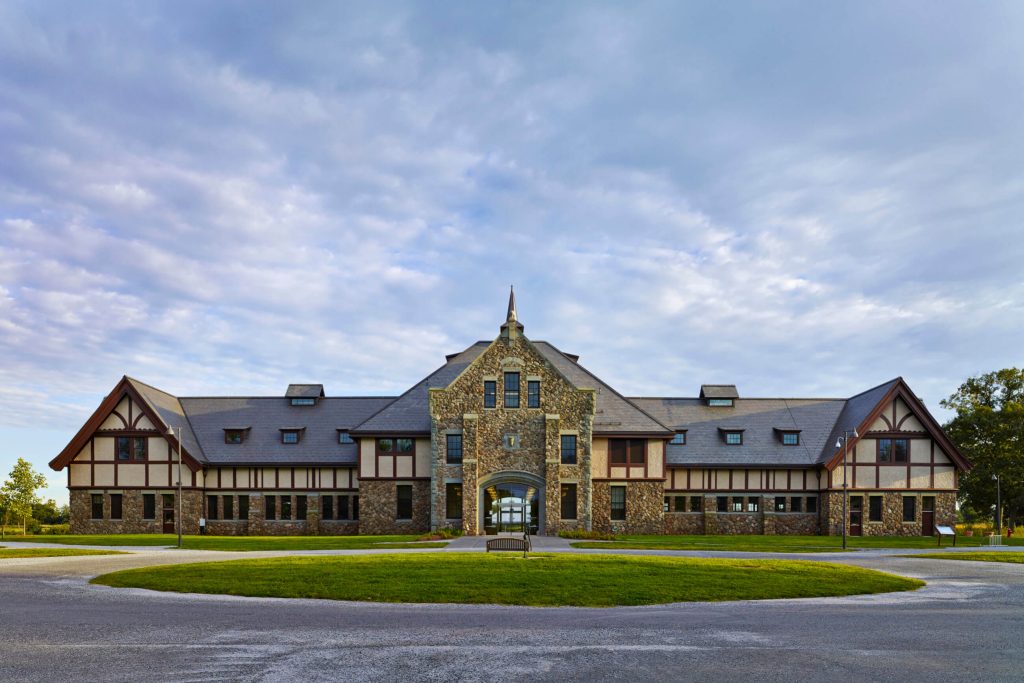
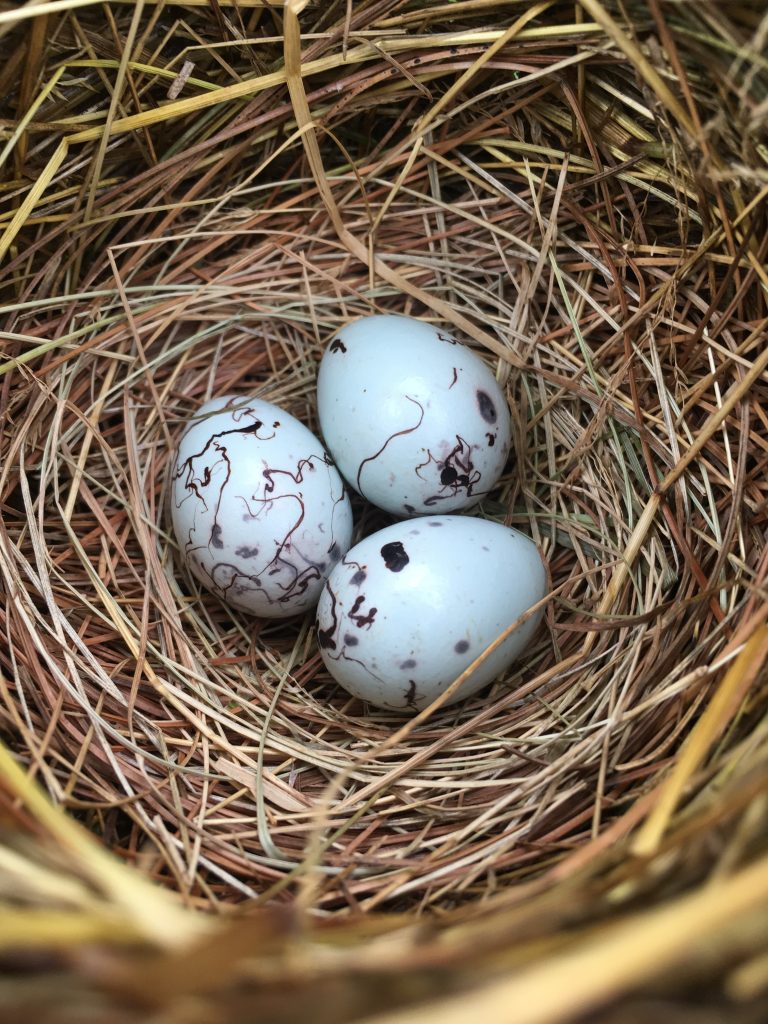
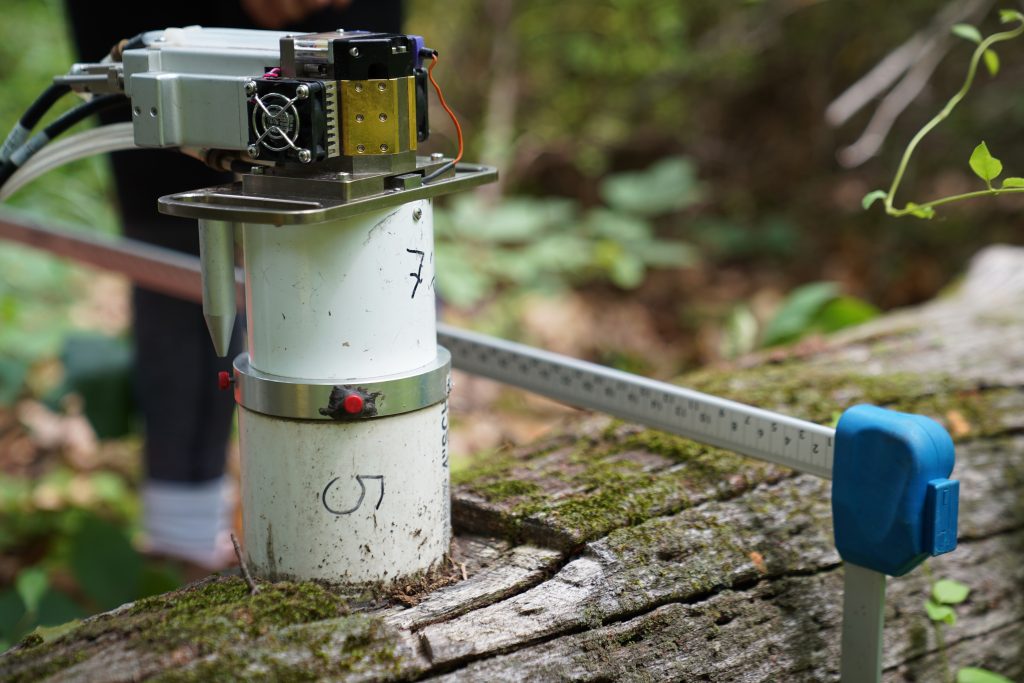
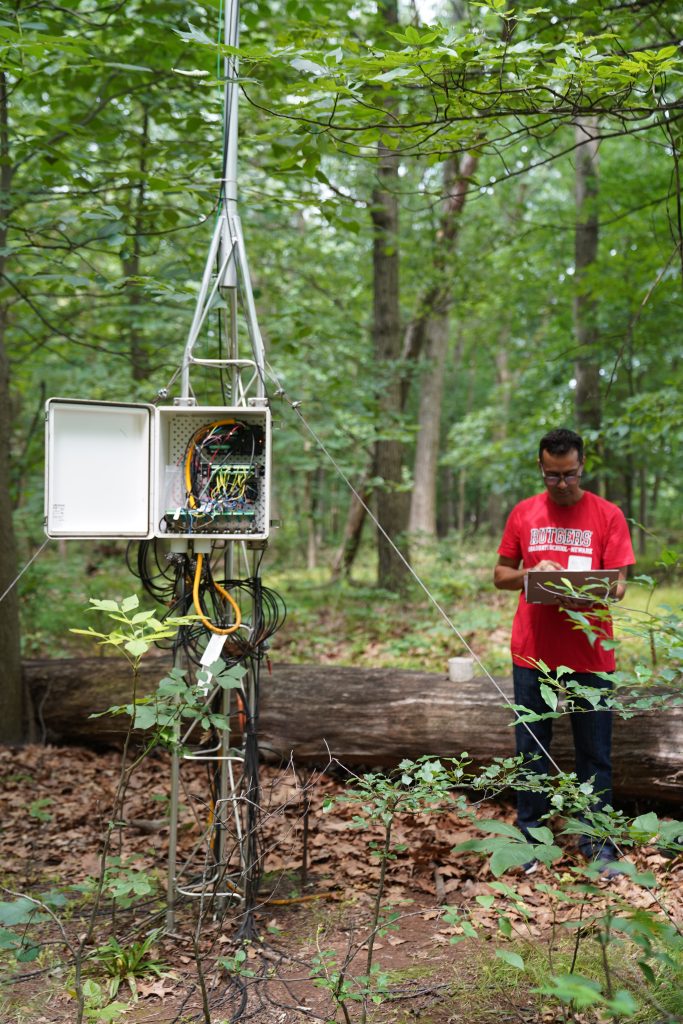
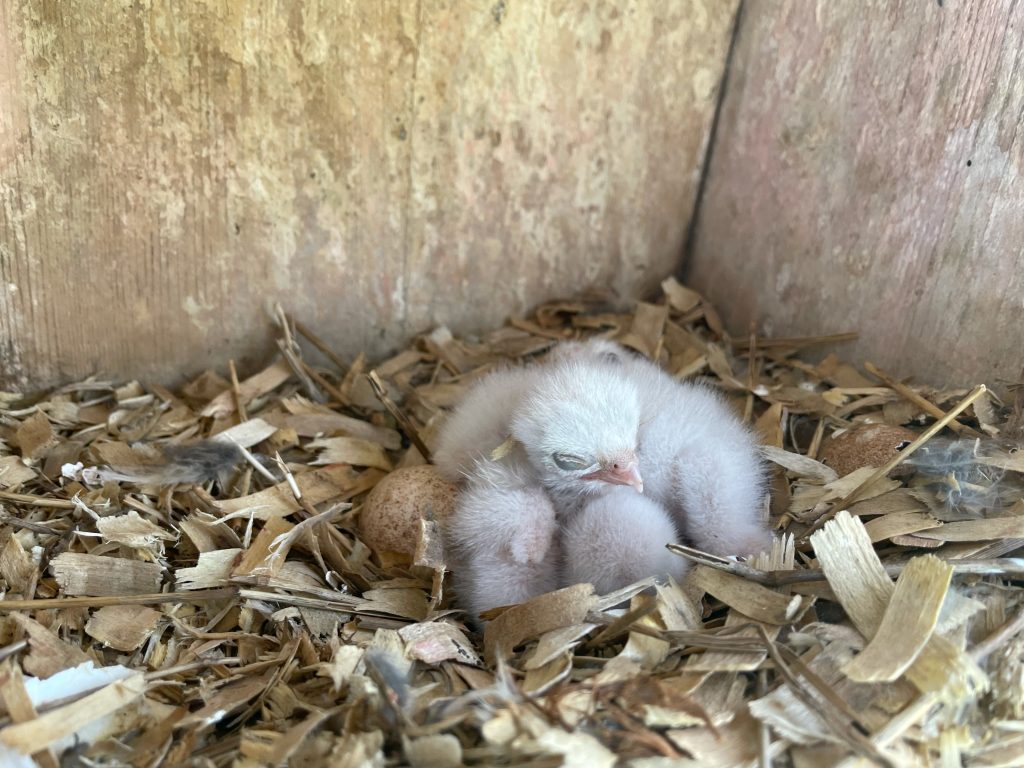


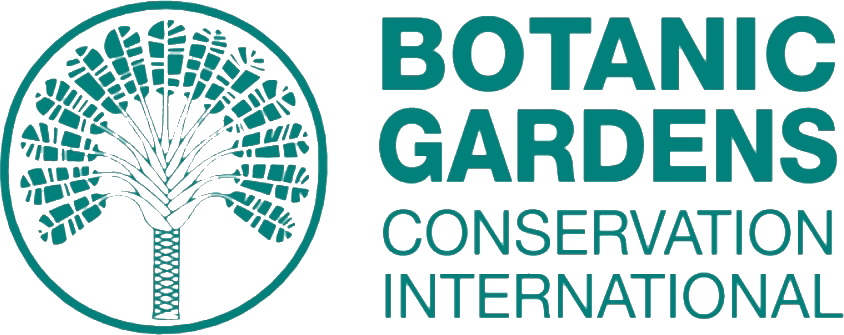



സമീപകാല അഭിപ്രായങ്ങൾ